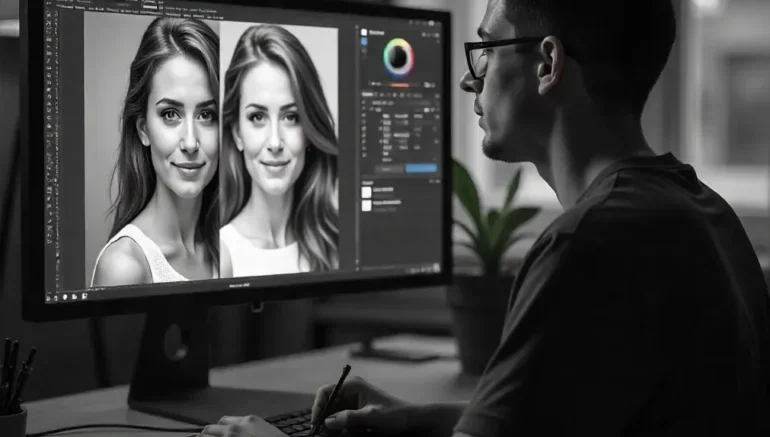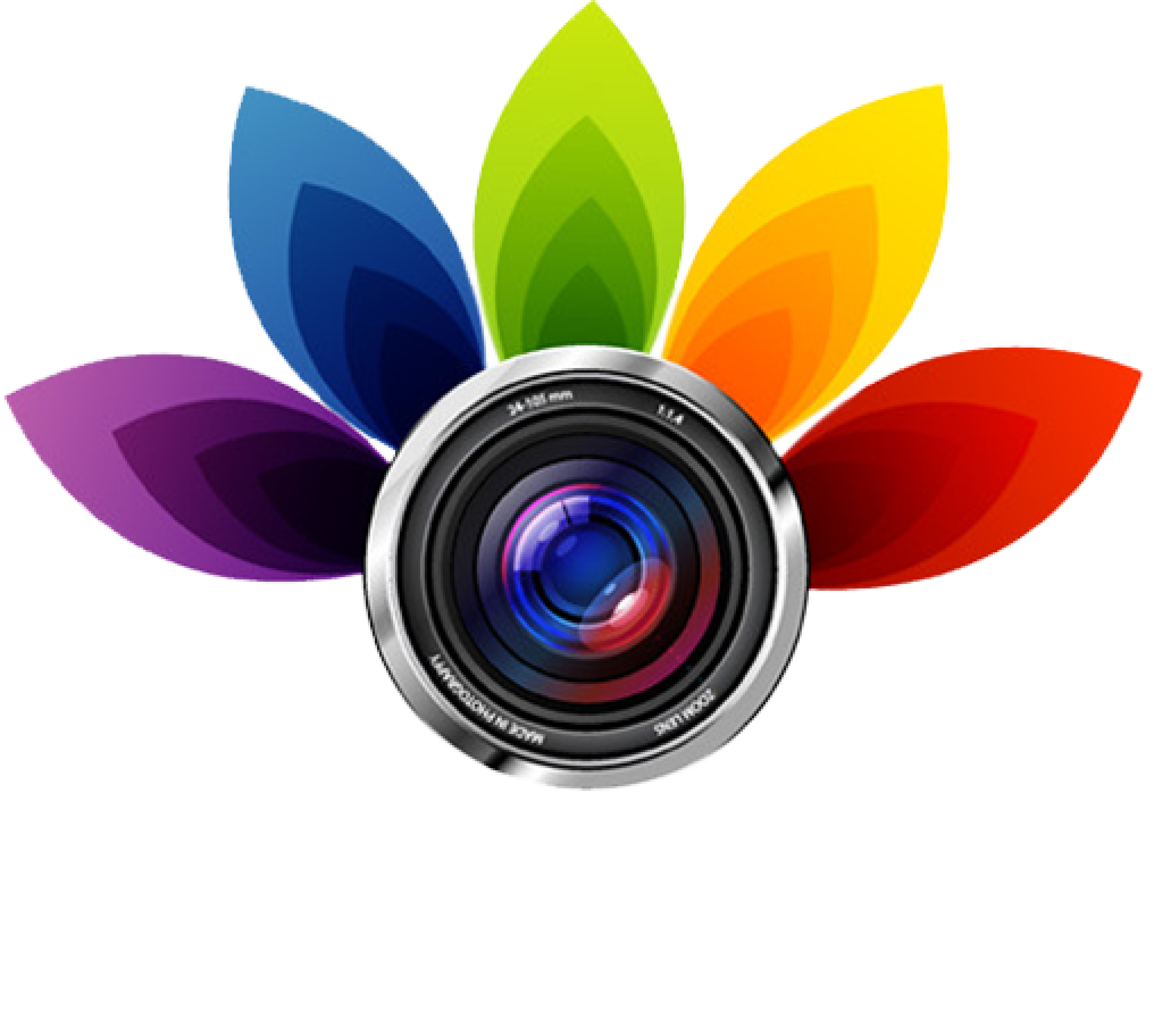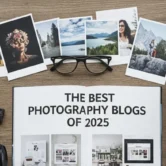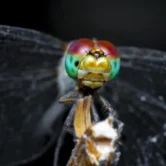
How to Choose Between AI Editing and Manual Retouching
Editing photos today is easier than ever, thanks to tools like AI Editing and Manual Retouching. With just a click, AI editing can fix colors, adjust brightness, or remove objects in seconds. It’s quick and useful, especially when you have a large batch of photos that need simple edits. But while AI is great at handling the basics, it can sometimes miss the finer details that make a photo look natural and polished. This is when manual retouching becomes important, giving photos the careful attention only human skill can provide.
Manual retouching may take more time, but it allows for precision and creativity that AI often lacks. A human editor can smooth skin without making it look fake, adjust lighting to fit the mood, and highlight small details that make an image stand out. It’s the personal touch that turns a simple photo into something professional and appealing. Deciding between AI editing and manual retouching depends on what you need; speed and convenience, or detail and quality. Knowing the strengths of both will help you choose the best option for your photos.
Understanding the Basics
 Before deciding which editing method to use, it helps to know the basics of how each one works. AI editing is powered by technology that can quickly correct colors, adjust brightness, or remove unwanted objects with just a few clicks. It’s fast and convenient, especially when you need to edit many photos at once. However, the speed comes with limits where AI often struggles to notice the finer details that give photos a natural and realistic look. Manual retouching, on the other hand, is done by skilled editors who carefully work on each image, making sure every detail looks right. This approach takes more time but allows for more control and creativity.
Before deciding which editing method to use, it helps to know the basics of how each one works. AI editing is powered by technology that can quickly correct colors, adjust brightness, or remove unwanted objects with just a few clicks. It’s fast and convenient, especially when you need to edit many photos at once. However, the speed comes with limits where AI often struggles to notice the finer details that give photos a natural and realistic look. Manual retouching, on the other hand, is done by skilled editors who carefully work on each image, making sure every detail looks right. This approach takes more time but allows for more control and creativity.
Understanding the difference between AI and manual work helps you see where each is most useful. AI is ideal for quick tasks and bulk edits, while manual retouching is best for images that require precision and a polished finish. If you’re unsure where to start, you can think about your needs and goals first. For example:
- Use AI editing for simple fixes and large numbers of photos.
- Choose manual retouching when quality, detail, and natural results matter.
- Try combining both methods to save time while still keeping important details.
The Role of AI Editing and Manual Retouching
 AI editing plays a big role in making photo editing faster and easier. With automated tools, it can adjust brightness, balance colors, and remove simple flaws in seconds. This makes it very useful for photographers or businesses that deal with hundreds of photos every day. The main strength of AI lies in its speed and convenience, giving you quick results without much effort. However, AI often works in a general way and may not always produce the natural look you want. This is why manual retouching still has an important place in photo editing.
AI editing plays a big role in making photo editing faster and easier. With automated tools, it can adjust brightness, balance colors, and remove simple flaws in seconds. This makes it very useful for photographers or businesses that deal with hundreds of photos every day. The main strength of AI lies in its speed and convenience, giving you quick results without much effort. However, AI often works in a general way and may not always produce the natural look you want. This is why manual retouching still has an important place in photo editing.
Manual retouching focuses on detail, accuracy, and creativity that AI cannot fully match. Skilled editors can work on skin tones, lighting, shadows, and other small adjustments that give photos a realistic and professional finish. Unlike AI, human editors understand artistic choices and can customize edits based on the mood or style you want. This makes manual work especially valuable for portraits, product photos, and projects where perfection matters. To make the most out of both methods, keep these points in mind:
- Rely on AI for quick corrections and high-volume editing.
- Use manual retouching for detailed, high-quality results.
- Consider blending both methods for speed and accuracy.
When Speed Matters Most
 There are times when speed is the top priority, and this is where AI editing shines. For photographers, e-commerce stores, or event organizers who need hundreds of images edited in a short time, AI can be a lifesaver. With just a few clicks, it can adjust exposure, fix colors, and even remove distractions in seconds. This allows businesses to meet tight deadlines without sacrificing too much on basic quality. While it may not be perfect, AI editing is reliable for fast results when volume matters more than fine detail.
There are times when speed is the top priority, and this is where AI editing shines. For photographers, e-commerce stores, or event organizers who need hundreds of images edited in a short time, AI can be a lifesaver. With just a few clicks, it can adjust exposure, fix colors, and even remove distractions in seconds. This allows businesses to meet tight deadlines without sacrificing too much on basic quality. While it may not be perfect, AI editing is reliable for fast results when volume matters more than fine detail.
Manual retouching, on the other hand, is usually slower and not ideal if you’re working against the clock. Since it takes more time and effort, it’s better reserved for projects that require precision and polish. If you often find yourself needing quick edits, it’s smart to build a workflow that takes advantage of AI’s speed while knowing when to switch to manual work for special images. Here are a few tips to manage time wisely:
- Use AI editing for bulk images with basic corrections.
- Save manual retouching for the most important or featured photos.
- Plan your editing workflow early to avoid rushing at the last minute.
Why Details Still Need Human Hands
 While AI editing is impressive, it often struggles with the finer details that make a photo look natural and realistic. For example, AI might smooth skin too much, making it appear plastic, or brighten an image in a way that feels unnatural. Human editors, on the other hand, can make small adjustments that keep the photo looking true to life. They can carefully handle shadows, highlights, and textures, making sure every part of the image looks balanced. This level of precision is something technology alone cannot fully achieve.
While AI editing is impressive, it often struggles with the finer details that make a photo look natural and realistic. For example, AI might smooth skin too much, making it appear plastic, or brighten an image in a way that feels unnatural. Human editors, on the other hand, can make small adjustments that keep the photo looking true to life. They can carefully handle shadows, highlights, and textures, making sure every part of the image looks balanced. This level of precision is something technology alone cannot fully achieve.
Manual retouching also adds an artistic touch that AI cannot replicate. A human eye can spot imperfections or creative opportunities that a machine may overlook. If it’s adjusting skin tones, removing blemishes, or product details, manual editing makes the final photo has personality and polish. If you want your photos to look professional and not overly processed, manual work is often the best choice. To get the best results, you can:
- Trust manual retouching for portraits, fashion, and product photos.
- Use human editors to maintain natural skin tones and realistic textures.
- Let manual work handle images that will be printed or displayed in high quality.
Choosing AI Editing and Manual Retouching for Different Needs
 Not every photo needs the same level of editing, which is why choosing between AI editing and manual retouching depends on your purpose. If you’re editing personal snapshots, social media content, or a large batch of simple product photos, AI can get the job done quickly. It offers fast corrections that are good enough for everyday use and online sharing. On the other hand, if the photos are for professional work like weddings, portraits, jewelry, or marketing campaigns, manual retouching is the better choice. These projects usually demand accuracy, natural results, and a style that fits the client’s vision.
Not every photo needs the same level of editing, which is why choosing between AI editing and manual retouching depends on your purpose. If you’re editing personal snapshots, social media content, or a large batch of simple product photos, AI can get the job done quickly. It offers fast corrections that are good enough for everyday use and online sharing. On the other hand, if the photos are for professional work like weddings, portraits, jewelry, or marketing campaigns, manual retouching is the better choice. These projects usually demand accuracy, natural results, and a style that fits the client’s vision.
Knowing when to use each method can save you both time and money. Instead of relying only on one, you can take advantage of both to fit different situations. AI is best for quick edits, while manual retouching should be used when quality and detail matter most. To help you decide, keep these simple tips in mind:
- Use AI for casual photos, bulk editing, and quick turnarounds.
- Choose manual retouching for high-quality projects and detailed work.
- Combine both methods if you want efficiency without losing the personal touch.
Finding the Right Balance
 Instead of choosing only one method, many photographers and businesses find that combining AI editing and manual retouching gives the best results. AI can handle the repetitive or time-consuming parts, such as fixing exposure or removing simple flaws, while manual editing can refine the details that really matter. This balance allows you to save time without losing quality. It also helps you meet deadlines while still keeping your photos professional and polished. By mixing both methods, you get efficiency from AI and creativity from human skill.
Instead of choosing only one method, many photographers and businesses find that combining AI editing and manual retouching gives the best results. AI can handle the repetitive or time-consuming parts, such as fixing exposure or removing simple flaws, while manual editing can refine the details that really matter. This balance allows you to save time without losing quality. It also helps you meet deadlines while still keeping your photos professional and polished. By mixing both methods, you get efficiency from AI and creativity from human skill.
Finding the right balance depends on the type of project and your goals. For example, social media content may only need AI for quick editing, but portfolio photos or product shots for advertising need the precision of manual retouching. Learning when to switch between the two methods can make your workflow smoother and more effective. Here are some tips to strike that balance:
- Let AI handle basic corrections and repetitive tasks.
- Reserve manual retouching for key images that require detail and polish.
- Create an editing plan that combines both to save time and maintain quality.
Making the Best Choice Between AI Editing and Manual Retouching
 When it comes to editing your photos, the best choice depends on what you need and the purpose of your images. If you’re working on quick personal posts or managing a large number of pictures, AI editing can save you a lot of time. It’s simple, fast, and gives results that are good enough for casual use. But if your photos are meant for professional projects like marketing, print, or client work, manual retouching is often the smarter option. It assures accuracy, detail, and a polished finish that AI alone may not deliver.
When it comes to editing your photos, the best choice depends on what you need and the purpose of your images. If you’re working on quick personal posts or managing a large number of pictures, AI editing can save you a lot of time. It’s simple, fast, and gives results that are good enough for casual use. But if your photos are meant for professional projects like marketing, print, or client work, manual retouching is often the smarter option. It assures accuracy, detail, and a polished finish that AI alone may not deliver.
The key is to match the editing method with your goals and resources. Instead of forcing one method for all situations, it’s better to choose based on what will serve your photos best. This way, you get the right balance of speed, quality, and cost. To guide your decision, think about these points:
- Use AI editing for quick tasks, bulk images, or casual projects.
- Choose manual retouching for professional, detailed, or high-value photos.
- Combine both when you need efficiency without giving up quality.
Conclusion
AI editing and manual retouching are not competitors; they’re tools you can use in different ways to reach the results you want. AI gives you speed for bulk edits, while manual work brings out the details that make photos look natural and professional. By knowing when to use each, you can save time without giving up quality. Every project is different, and your choice should match your goals, style, and budget. How about you; do you see yourself relying more on AI, manual editing, or both? Drop your answer in the comments below.
Read Next: Why AI Photos with a Touch of Editors Create Amazing Images






1 Comment
Thea Hayes
August 20, 2025I just wanted to drop by and say how much I appreciate your blog. Your writing style is both engaging and informative, making it a pleasure to read. Looking forward to your future posts!